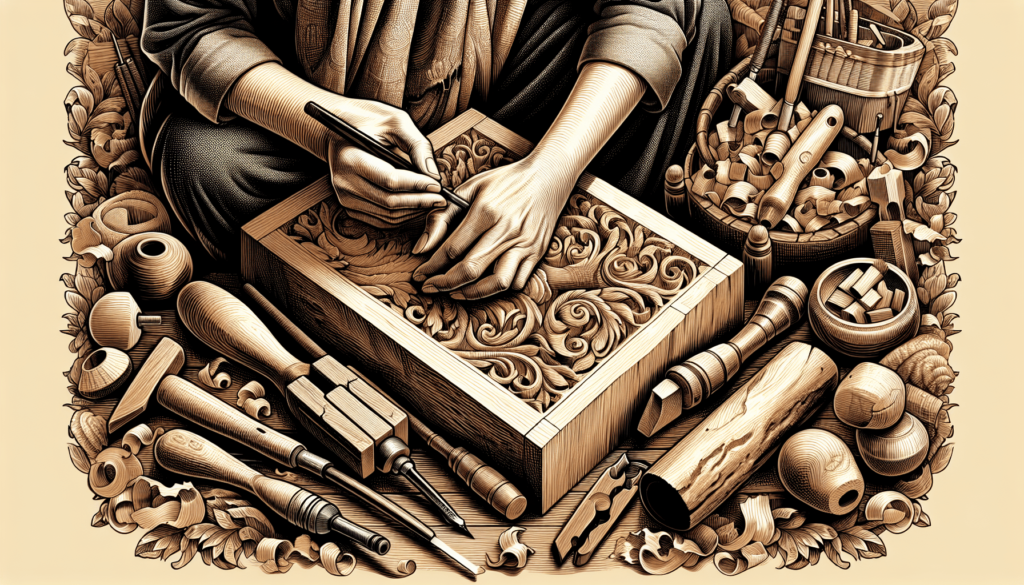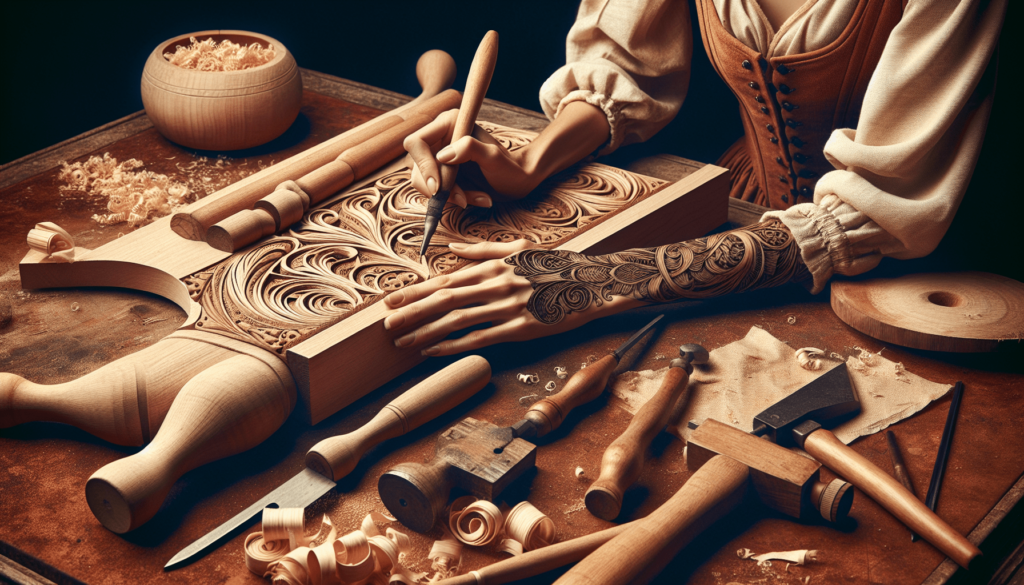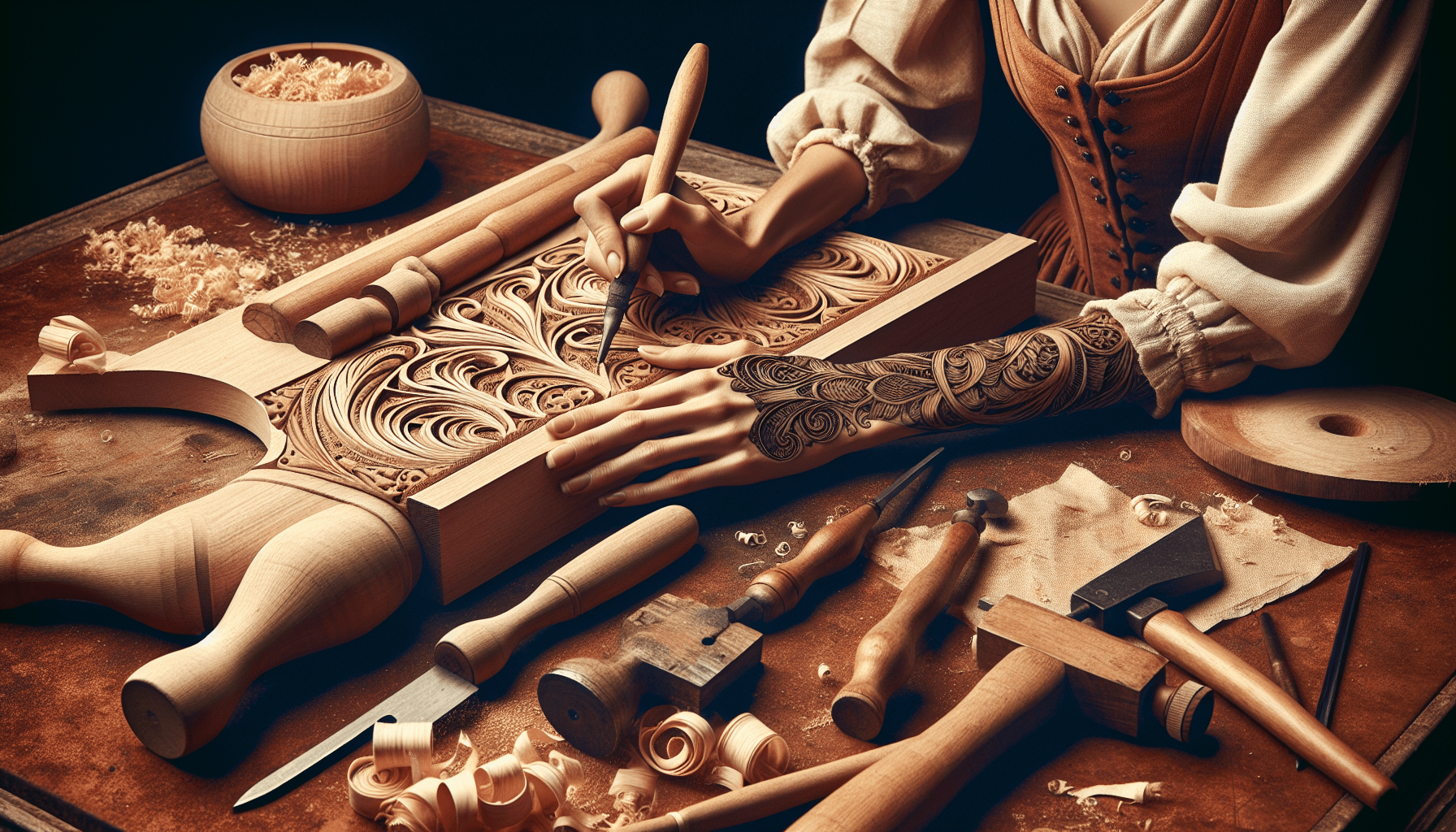I’ve always been fascinated by how a simple piece of wood can be transformed into something beautiful and functional. Wood crafting, also known as woodworking or carpentry, is an ancient skill that has evolved through the centuries. From creating intricate furniture to constructing sturdy houses, the art of working with wood encompasses various techniques and traditions. In this article, we’ll explore the different names and facets of wood crafting, uncovering the rich history and modern applications of this timeless craft. Have you ever found yourself gazing in awe at a beautifully crafted wooden object and wondered, “What is wood crafting called?” Well, you’re not alone. I’ve been down that rabbit hole myself—there’s just something irresistibly fascinating about the way wood transforms under expert hands. Let’s dive into the enchanting world of wood crafting, and maybe answer a few questions along the way as we explore this time-honored craft.
What is Wood Crafting?
First things first, wood crafting is commonly called “woodworking.” Creative, right? But don’t let its simplicity fool you. Woodworking encompasses an array of skills and techniques, each more mesmerizing than the last. It’s like a delicious buffet for the hands and soul, featuring everything from carpentry to whittling. It’s not just about making furniture or birdhouses; it’s about connecting with the material in a deeply personal way. Trust me, once you start, you’ll find it hard to ever look at a tree the same way again.
Woodworking vs. Carpentry vs. Joinery
You might be thinking, “Aren’t woodworking, carpentry, and joinery all the same thing?” Well, that’s like saying a cappuccino, espresso, and a latte are all just coffee. Sure, they’re cut from the same caffeinated bean, but each has its unique process and flavor. Here’s a quick breakdown:
| Term | Definition |
|---|---|
| Woodworking | Broad term including all activities shaping wood into useful or aesthetic items |
| Carpentry | Focuses on large structures like homes, where precise, durable construction matters |
| Joinery | Specializes in joining pieces of wood together without nails or screws |
Understanding these distinctions helps you appreciate each craft’s unique nuances, kinda like how knowing your coffees makes your Starbucks order sound way more sophisticated.
The History of Wood Crafting
Let’s hop into a time machine, shall we? Buckle up because we’re going way back. Humans have been crafting wood for millennia. Ancient Egyptians, for instance, were pros at turning wood into chariots and coffins. It’s almost like the original HGTV series, minus the dramatic home renovations and sponsorships.
Ancient Civilizations and Wood
The Egyptians weren’t alone in their woodworking endeavors. The Greeks and Romans also honed this craft, fashioning everything from basic tools to lavish furniture. Imagine a Greek philosopher lounging on a meticulously carved wooden chaise, pondering life’s big questions. It’s a comforting image, isn’t it?
Evolution of Techniques
As centuries rolled on, advancements in tools and techniques morphed wood crafting into what we know today. From the handheld iron axes of the Iron Age to today’s sophisticated CNC routers, each epoch brought about innovations that made the art more precise and intricate. It’s like watching the evolution of dance—from the waltz to breakdancing but with sawdust and chisels.

The Types of Wood Crafting
Alright, so you’re hooked. But where to start? The world of wood crafting is vast. Do you see yourself as a future Michelangelo of wooden sculptures, or perhaps the next Frank Lloyd Wright of timber framing? Here’s a broad look at some popular types of wood crafting:
Whittling
If minimalism is your middle name, then whittling might be right up your alley. Armed with just a simple knife, you can transform small pieces of wood into detailed creatures or quirky figurines. It’s like doodling, but with wood shavings, and significantly more impressive.
Wood Turning
For the lovebirds who adore symmetry, wood turning is your jam. Utilizing a lathe, you can create perfectly symmetrical objects like bowls, vases, and even intricate table legs. Think of it like the pottery wheel’s rugged, lumberjack cousin.
Carpentry
The Big Kahuna of woodworking, carpentry covers the construction of structures—anything from houses to decks. And within carpentry, you have specialties like:
- Rough Carpentry: Working on the framework of buildings.
- Finish Carpentry: Where the fine details, like trim and cabinetry, come to life.
Cabinet Making
Got a knack for storage solutions? Cabinet making might be your calling. This niche focuses on crafting furniture, cabinets, and wooden fixtures for homes and businesses. It’s like playing Tetris but with wooden panels and drawers. Very satisfying once everything fits just so.
Essential Tools of the Trade
You wouldn’t bake a cake without a mixer, right? Similarly, the right set of tools is indispensable in woodworking. Here’s a list to get you started:
Hand Tools
These beauties don’t require electricity but pack a punch when used correctly:
- Chisels: For carving and shaping wood.
- Hand Saw: Cuts wood precisely, giving you complete control.
- Mallet: Pairs fantastically with your chisel set.
- Planes: To smooth out surfaces, leaving the wood velvety soft.
Power Tools
If you’re more into power than finesse, you’ll love these:
- Circular Saw: Makes quick, straight cuts.
- Jigsaw: For those curvy, intricate designs.
- Drill: Essential for making holes and driving screws.
- Routers: Carve out grooves and notches, adding decorative touches to furniture or trim.
Safety Gear
Don’t forget, safety first! Always wear:
- Safety Glasses: To protect your peepers from flying wood chips.
- Dust Masks: Inhaling wood dust is a good way to ruin your day.
- Ear Protection: Power tools can be loud enough to rival a rock concert.

Wood Types and Their Uses
Not all woods are created equal. Trust me, you don’t want to carve a delicate figurine out of pine only to see it disintegrate. Here’s a handy guide to some common types of wood and their best uses:
| Wood Type | Characteristics | Best For |
|---|---|---|
| Oak | Strong, durable, heavy grain | Furniture, flooring, cabinetry |
| Pine | Soft, light, easy to work with | Shelving, paneling, light furniture |
| Walnut | Dark color, rich grain, durable | High-end furniture, veneers |
| Maple | Hard, dense, fine grain | Cabinets, flooring, cutting boards |
| Cherry | Reddish-brown, ages beautifully | Furniture, musical instruments |
Understanding the different types of wood can make or break (literally) your project. Like matchmaking but with timbers—find the perfect partner for your woodworking dreams.
Techniques and Skills to Master
Remember the overwhelming joy of learning to ride a bike? That’s what mastering woodworking techniques feels like, minus the scraped knees and emotional turmoil. Here are a few skills you’ll want to perfect:
Measuring and Marking
Measure twice, cut once. You’ve heard it before, but it’s gospel in woodworking. Accurate measurements are the foundation of a successful project. Invest in quality measuring tapes, squares, and marking tools.
Cutting
The backbone of woodworking, cutting can be straightforward or artistic, depending on your project. Learn to saw straight lines first, then amp up to curves and intricate designs.
Joining
Nails and screws are reliable friends, but they lack finesse. Learn joinery techniques—like dovetail, mortise and tenon, and biscuit joints—for a cleaner, more professional look.
Sanding and Finishing
A raw piece of wood is like uncooked pasta—it needs some work to reach its full potential. Learn the art of sanding, and don’t skimp on the finishing touches like applying varnish or stains.
Carving
For those who see wood crafting as an art form, carving offers a way to add intricate details and personal flair. With the right set of chisels and gouges, you can transform a block of wood into anything your imagination conjures.
Common Mistakes and How to Avoid Them
Sometimes, the path to mastery is littered with mishaps—or as I call them, “learning experiences.” Here’s how to avoid common woodworking pitfalls:
Ignoring the Grain
The grain of the wood is like its DNA, guiding you on how to cut, sand, and finish. Going against the grain can lead to splinters, rough surfaces, and general heartbreak. Always follow the grain for a smoother, more professional result.
Skipping Sandpaper Grits
Jumping straight to fine sandpaper might seem like a shortcut to a smooth finish, but it’s a fast track to disaster. Start with a coarse grit and gradually work your way to finer grits for that coveted velvety texture.
Overpowering Your Tools
It’s tempting to push your tools to their limits, especially when you’re in the groove. But overworking tools can lead to mistakes—or worse, accidents. Let the tools do the work and handle them with care and respect.
Getting Started with Your First Project
Alright, you’re armed with knowledge and enthusiasm. Time to get your hands dirty! Start with a simple project to build confidence and skill. How about a small bookshelf or birdhouse? Here’s a basic roadmap to get you started:
Step 1: Choose Your Project
Select something straightforward, with minimal materials and easy cuts. Avoid projects that require advanced joinery or detailed carving until you’ve got a few basics under your belt.
Step 2: Gather Materials and Tools
Make a list of everything you need. Check and double-check. Nothing disrupts a project faster than realizing you’re short one crucial component.
Step 3: Plan Your Cuts
Lay out your wood pieces and mark your cuts before lifting a saw. Proper planning and visualization can spare you a ton of headaches (and waste).
Step 4: Cut and Assemble
Take it slow, measure again, and then make your cuts. Assemble the pieces cautiously, ensuring each join fits snugly and securely.
Step 5: Sand and Finish
Once everything is pieced together, sand the surfaces until smooth. Apply your choice of finish—be it stain, varnish, or paint—and let it dry thoroughly before use.
Next Steps: Taking Your Skills to the Next Level
Ready to take it up a notch? Here are some ways to further hone your craft and really impress your friends and family:
Advanced Joinery
Learn more complex joinery techniques. The dovetail joint, though tricky, offers unmatched beauty and strength. Enroll in a woodworking class or find online tutorials to guide you.
Wood Inlay
Adding inlays of different wood types or even materials like metal or resin can give your projects a distinctive, artistic flair.
Custom Furniture
Challenge yourself with custom furniture pieces. Designing and building your own furniture allows for personal expression and functional art that’s unique to your home.
The Business Side
Turn your hobby into a business. If you find yourself producing more pieces than your home can handle, consider selling your work at local craft fairs or online marketplaces. Etsy, anyone?
Resources to Dive Deeper
Every master was once a beginner. There are countless resources to help you grow your woodworking skill set:
- Books: Classics such as “The Complete Manual of Woodworking” by Albert Jackson, David Day, and Simon Jennings.
- Websites: Blogs like The Wood Whisperer and LumberJocks offer tutorials and community support.
- YouTube: Channels like Steve Ramsey’s Woodworking for Mere Mortals and April Wilkerson’s DIY Woodworking provide a mix of project ideas and skill tutorials.
- Classes: Local community colleges and adult education centers often offer woodworking courses, providing hands-on learning opportunities.
The Zen of Woodworking
As you delve deeper into woodworking, you’ll discover it’s not just about creating beautiful objects. It’s about zen-like patience, the joy of craftsmanship, and the satisfaction that comes from making something with your own two hands.
In our fast-paced, digital world, there’s something incredibly soothing about working with a material as timeless and natural as wood. So the next time you find yourself stressed or needing a break, remember—you have your saw, your chisel, and an endless world of wooden possibilities.
So, what is wood crafting called? It’s called woodworking, but it’s so much more than that. It’s a journey, a passion, and a timeless art form. Ready to carve out your path?

